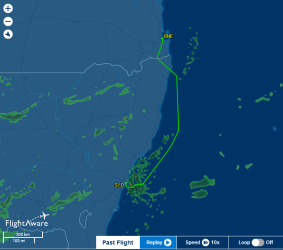Good evening, I would appreciate the thoughts of the pilots in the community about entry pathways into this career.
I’m not quite sure how to start here, as it’s not a simple process of getting a licence and then putting your hand up for a job. At the higher levels (i.e. airlines and air force) the pilot training system is literally a culling machine. It’s not designed to get weaker students through, but rather to identify them and remove them from the stream. At the lower levels (some GA schools) it’s designed to stretch your training out as long as possible, before you realise it’s not for you, to maximise their return.
Sadly, nobody really knows where they’ll fit on the spectrum until their training has started.
My 16 year old son has wanted to be a commercial airline pilot since he could talk. His entire life revolves around aviation and always has done.
Which is most of us.
At the moment he is choosing subject ms for year 11 and 12 and discussions have become more focused on what sort of entry pathway he should be aiming for; does he complete a Bachelor of Aviation, or should he put his energy into trying to get a Cadetship with an Australian or UK airline (he has dual citizenship).
He should do a degree that will feed him. There is no rhyme or reason to the various degrees pilots have. The RAAF guys were either science or engineering, but I know of people with chemistry, pharmac_, medical, veterinary, finance and economics. IT. Law. Even music. Anything arts is probably a bad idea. The reality is that most people who start the journey to becoming a pilot, don’t complete it, so these degrees are of far more use than anything aviation related. Irrespective of the route chosen, he must have physics and maths.
The CASA mandated subjects for the various licences are all available online, and it shouldn’t be too difficult to do them whilst taking care of the ‘feed me’ degree.
The cadet schemes are expensive, do not have guarantees at the end, and are (at least in Oz) designed to push these new pilots to the lower end airlines that a group might own, that are otherwise unattractive to already qualified people. On the other hand, if you can afford them, manage to get past the selection process (they’re hard to get into, even though you’re paying for them), they’re probably the closest thing to a guarantee of something. Note that last time I looked, they were not an avenue to Qantas mainline, but could get you QLink or Jetstar. Rex runs their own, and I know many ex-Rex pilots who managed to jump to QF mainline.
Given the (apparent?) shortage of pilots, it seems that, if he’s able to get one, a Cadetship might be an effective way of getting him where he wants to be.
He’s 16 now. By the time he’s qualified, any shortage will have disappeared. The shortages are also not necessarily of pilots, but of pilots willing to work for the offered pay.
You should also have a think about the what the future will bring. Whilst automation is not ready for the prime time yet, very likely we’re only a generation of aircraft away from it becoming much more real. I’d have little doubt that in the course of any 16 year old’s career, it will take over most, if not all, of the job.
According to flying schools there is always a shortage, but their business is selling training.
He’s doing everything we can think of to make himself a strong candidate in the future: Airforce Cadets, Leadership training, Duke of Edinburgh etc
16. I’m pretty sure he can start private pilot training at that age. So perhaps a few hours might help to sort things out.
I’d love advice on what pathway you would pursue if you were starting out at this point in time (which if you believe the media is that there is a pilot shortage).
I’d like to fly an F35, so I’d follow exactly the path that I did. The military.
Also, is there anything else he could be doing to increase his chance of reaching his goal?
All of the selection systems are choosy. They do not need to take people who barely passed HSC. He needs marks that are as high as he can get, especially in maths and physics. It’s not that you’ll necessarily use them, but it’s a way of separating the applicants.
Even though I ended up an airline pilot, the best training that exists in this country is that offered by the RAAF. And they even fly some pretty cool aircraft, many of which are little different to the airliners used by QF.




















